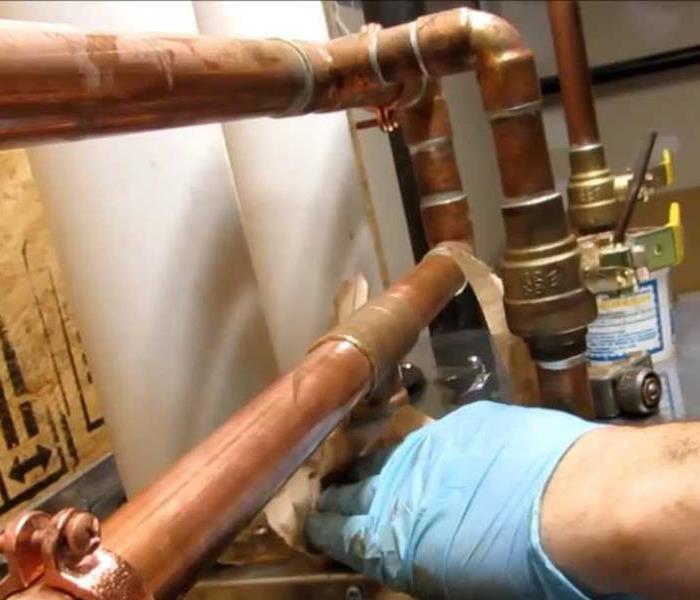Winter Weather and Water Safety
1/18/2019 (Permalink)
Anne Arundel County contains several water ways and winter weather can bring about more issues than just slippery roads and a sidewalk to shovel. You are also at risk for frozen pipes and ice dams.
With colder air and water temperatures, it’s crucial to be prepared for anything if you happen to be heading out on the water for any activity this winter –boating, kayaking, paddle boarding or even ice fishing and snowmobiling.
If you plan to participate in any water activity this winter – know what will keep you safe! Click here to read more about Winter Water Safety.
FROZEN PIPES Frozen pipes are often those exposed to the cold weather, such as those outside your house, or in cold areas such as basements, attics, garages, or kitchen cabinets.
A frozen pipe can burst at the point where the ice blockage inside the pipe is located, but typically the rupture is caused by the backflow pressure between the water source and the blockage. A burst pipe can cause considerable damage to your property if not addressed quickly.
To prevent pipes from freezing, here are a few steps you can take, according to The American Red Cross:
- Be sure to completely drain water from swimming pool and sprinkler lines, as well as outside hoses.
- Open kitchen cabinets to let warm air circulate near the plumbing.
- When the weather is extremely cold, let water drip from faucets that may come from exposed pipes.
- Keep your heat set to the same temperature both day and night.
Ice dams can be a little-known, but major problem during the snowy season. They form when heated air melts roof snow downward into water dammed behind still-frozen ice. When the trapped water cannot safely flow or run into the gutter system, it can backflow under the roof ’s shingles and into the structure’s interior areas, as well as causing gutters and shingles to move or fall.
Icicles can be an initial sign of an ice dam, according to Travelers.com. To spot ice dams inside, “check for water stains or moisture in your attic or along the ceiling of exterior walls of your house. Water stains or moisture may be an indication that an ice dam has formed and water has penetrated the roof membrane.”
Removing an ice dam as soon as it is found is vital to helping prevent damage to your property and can be done using heated cables, a roof shovel, or calcium chloride ice melter.
If winter weather causes water damage to you or your insured’s property, the SERVPRO of Edgewater/Deale-Churchton/Lothian are only a call away, 24/7, ready to restore to preloss condition.






 24/7 Emergency Service
24/7 Emergency Service